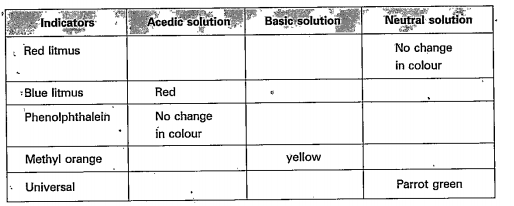The table below is designed to indicate the transport of certain substance in our body. Fill in the blanks with suitable answers.SubstanceFromTo…………….LungsWhole bodyCarbon dioxide……………….……………..Urea……………….……………….Digested carbohydratesIntestines……………...……………..……………….Target organs
SubstanceFromToOxygenLungsWhole bodyCarbon dioxideWhole bodyLungsUreaWhole bodyKidneysDigested carbohydratesIntestinesWhole bodyHormonesEndocrine glandsTarget organs
Related Solutions
Fill in the blanks: Urea is transported by __________________.
View SolutionFill up the blanks with suitable words: Our ancestors used appendix to digest …........................
View SolutionAnalyze the table given below and fill in the blanks suitably.
View SolutionFill in the blanks with suitable terms according to the indicators shown below: Indicators: Excretory organ . Cockroach:........
View SolutionFill in the blanks with suitable terms according to the indicators shown below: Indicators: Excretory organ: Earthworm:..........
View SolutionBased on the properties of acids, bases and neutral solutions, fill the following table.

View SolutionFill the following of results of reactions between some substances (acids, bases, neutral substances) and indicators.

View Solutionশূন্যস্থান পূরণ করো : ACTH-এর টার্গেট অঙ্গ হলো __________ ।
View Solution___ The main digestive organs of our body
View SolutionFill in the blanks: The substances that cause allergies in our body are called __.
View Solution____ The excretory organ at a certain angle to the excretory substance. (Fill in the blanks with the appropriate word)
View Solutionहमारे शरीर में किस अंग द्वारा अमोनिया को यूरिया में बदला जाता है -
View Solution42.____________ ଆମ ଶରୀରରେ ମୁଖ୍ୟ ରେଚନ ଅଙ୍ଗ !
View SolutionFill in the blanks by suitable words to make correct statements: Substances which cannot be decomposed by micro-organisms are called _______ substances.
View SolutionFill in the blanks ____ urea synthesis occurs in the human body.
View SolutionThe majority of carbon dioxide produced by our body cells in transported to the lungs:
View SolutionThe majority of carbon dioxide produced by our body cells is transported to the lungs -
View SolutionThe majority of carbon dioxide produced by our body cells in transported to the lungs
View SolutionThe majority of carbon dioxide produced by our body cells is transported to the lungs -
View SolutionThe majority of carbon dioxide produced by our body cells is transported to the lungs -
View Solution